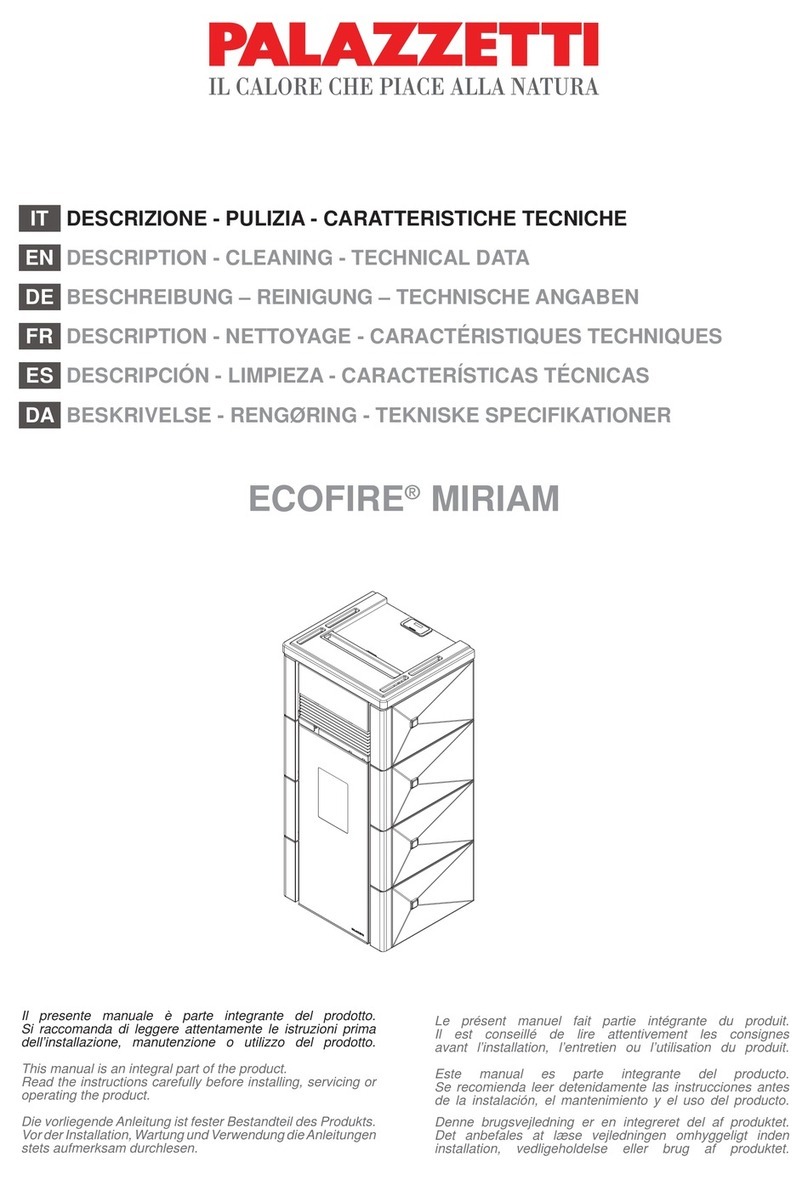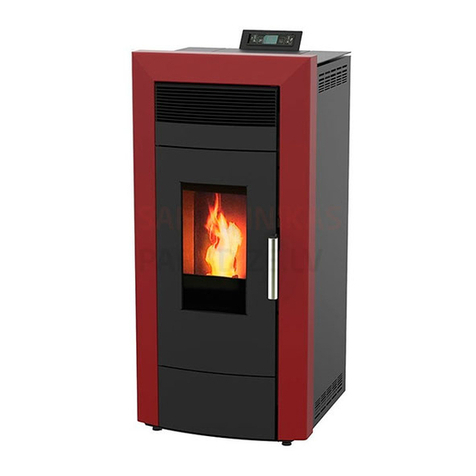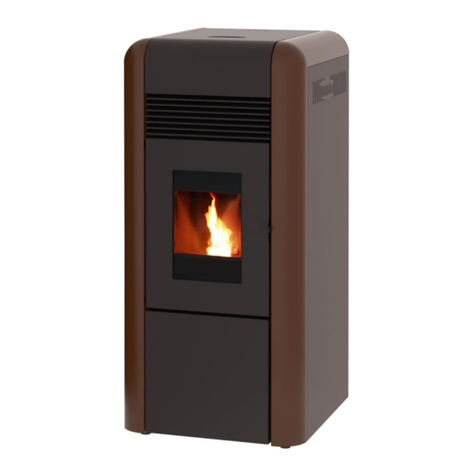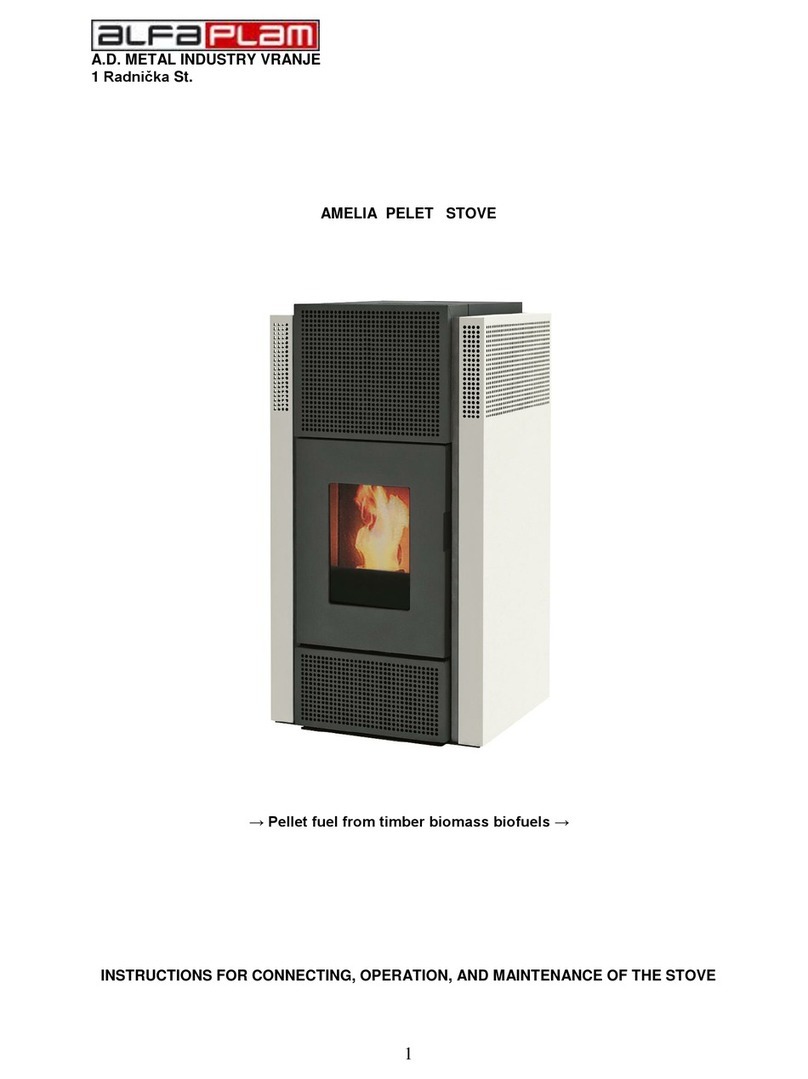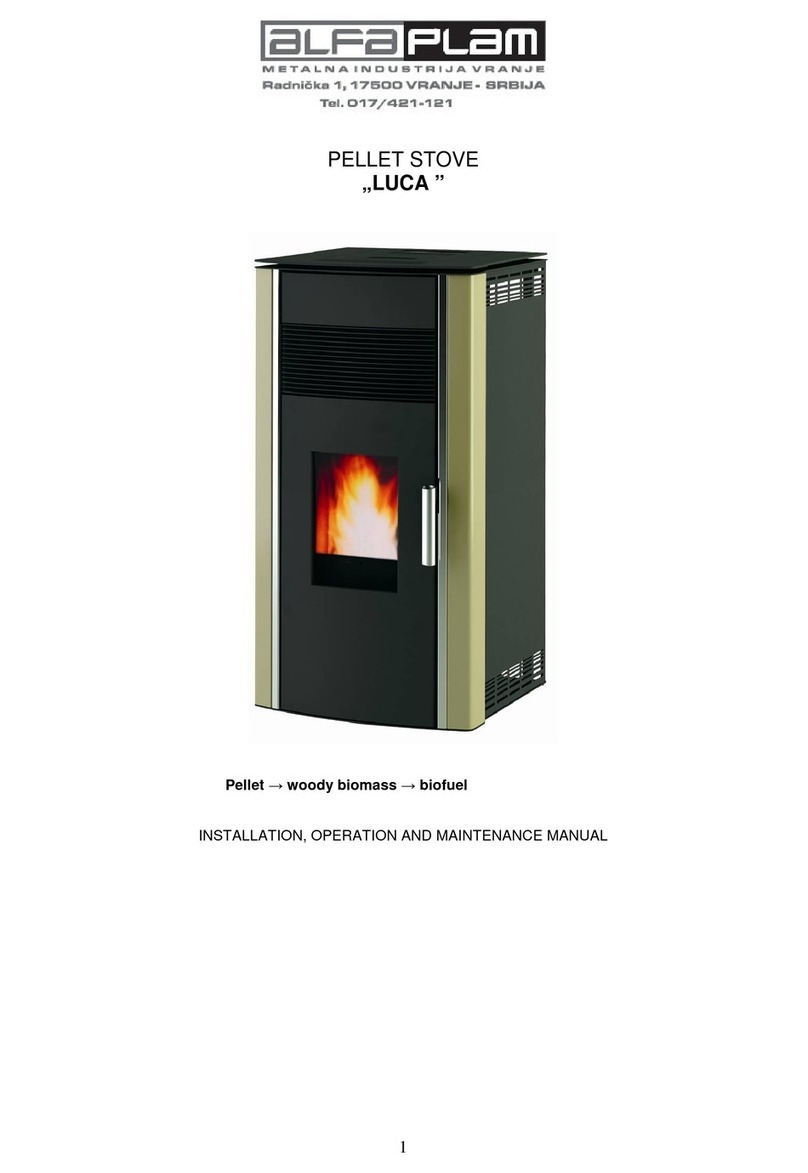
5
When putting the pellets into the furnace make sure they don’t fall into other internal parts of the product expect into
the proper container.
⚠ATTENTION: If you can’t turn the furnace on you will have to empty the combustion chamber. Not following this
procedure may cause excessively strong burning that can lead to creating significant amounts of smoke.
⚠ATTENTION: Do not open the door or turn off the electrical cable during the ignition phase or during shutting down,
or while the furnace is running, even if the combustion chamber is blocked or overloaded; start the process of turning it off
and wait for the furnace to complete operating phases before solving the problem. Do not attempt to turn on the furnace
again until the problem is solved.
⚠ATTENTION: Do not disturb the shutdown procedure of the furnace (for example, by
turning off the power cord) until it is completed.
⚠ATTENTION: If the wood pellets accumulate in the combustion chamber when the appliance is operation, immediately
turn off the appliance and turn it on again using the greater ventilation program. If the pellets continue to accumulate, try
using other types of wood pellets or call the helpline.
⚠ATTENTION: Never manually put the pellets into the combustion chamber.
⚠ATTENTION: In order to prevent possible accidents, always follow the instructions for proper use contained in this user
guide for the appliance and its electrical components.
⚠ATTENTION: Installation procedures, connecting inspections, maintenance and repairs may be carried out by qualified
personnel.
⚠ATTENTION: The product must be installed in full respect of the applicable legal standards.
⚠ATTENTION: Always follow the safety recommendations and standards indicated by this user guide.
⚠ATTENTION: Anyone who performs interventions on the product must first read and fully understand the contents of
this user guide and fully know the dashboard of the product.
⚠ATTENTION: The product can be used, modified, or programmed by adults only. Incorrect or arbitrary settings can lead
to dangerous situations and faults.
⚠ATTENTION: ALFA PLAM bears no civil or criminal liability for damages in the event that the product is subjected to
unauthorized repairs or replacement of parts.
⚠ATTENTION: While in the product is running some of its surfaces can reach extremely high temperatures.
That’s why it is recommended to the user to take all the necessary precautions, particularly when children or elderly or
disabled people are present.
⚠ATTENTION: Do not block or clogs the hot air drain in any way. Do not cover the product with cloth or other similar
materials.
⚠ATTENTION: In order to avoid accidental tipping over of the appliance, never lean or place too much weight on the open
door during the cleaning process.
It is recommended to avoid these kinds of pressures and to take all the necessary precautions, particularly when children
or elderly or disabled people are present.
General Recommendations
⚠ATTENTION: Never use the product for purposes other than those for which it is designed and manufactured.
⚠ATTENTION: The product must not be used for cooking.
⚠ATTENTION: The product should not be used in the event of any fault or failure. In these cases, immediately turn off
the power cord of the product from the wall socket.
NEVER leave the door open while the product is running.
Stovepipes must be checked regularly.
NEVER use steam to clean the product.
Always consult qualified and authorized personnel for any service interventions that may be necessary. Use only original
spare parts for replacement of broken parts.
Fuel can only be loaded into the burner through automated loading, and not directly by the user.
⚠ATTENTION: In case of "unsuccessful ignition”, all pellets deposited in the combustion chamber must be removed
before one tries to re-ignite the furnace. Pellets that are removed from the combustion chamber should never be returned to
the tank.
This user guide must be considered an integral part of the product and must be used during its entire service life. It must
be stored in a safe place. In case the user guide is lost or damaged, a replacement copy can be obtained from the dealer.
Safety devices
The product is equipped with the following safety devices:
•A thermostat for determining the temperature of the tank: this device shuts down operation of the product each time
it exceeds the set safety limit;
•Meter for determining the smoke temperature: this element determines the smoke temperature and continually
monitors the proper functioning of the product;
•Pressure switch: this element determines whether there is a clogging in the pipe;
•Thermometer for the environment: this element constantly monitors the temperature of the room where the furnace
is located;
•Operation modulation mode: if the flue gas temperature exceeds the set safety threshold, the appliance will
automatically reduce the amount of pellets for burning until the temperature drops below the set limit.
